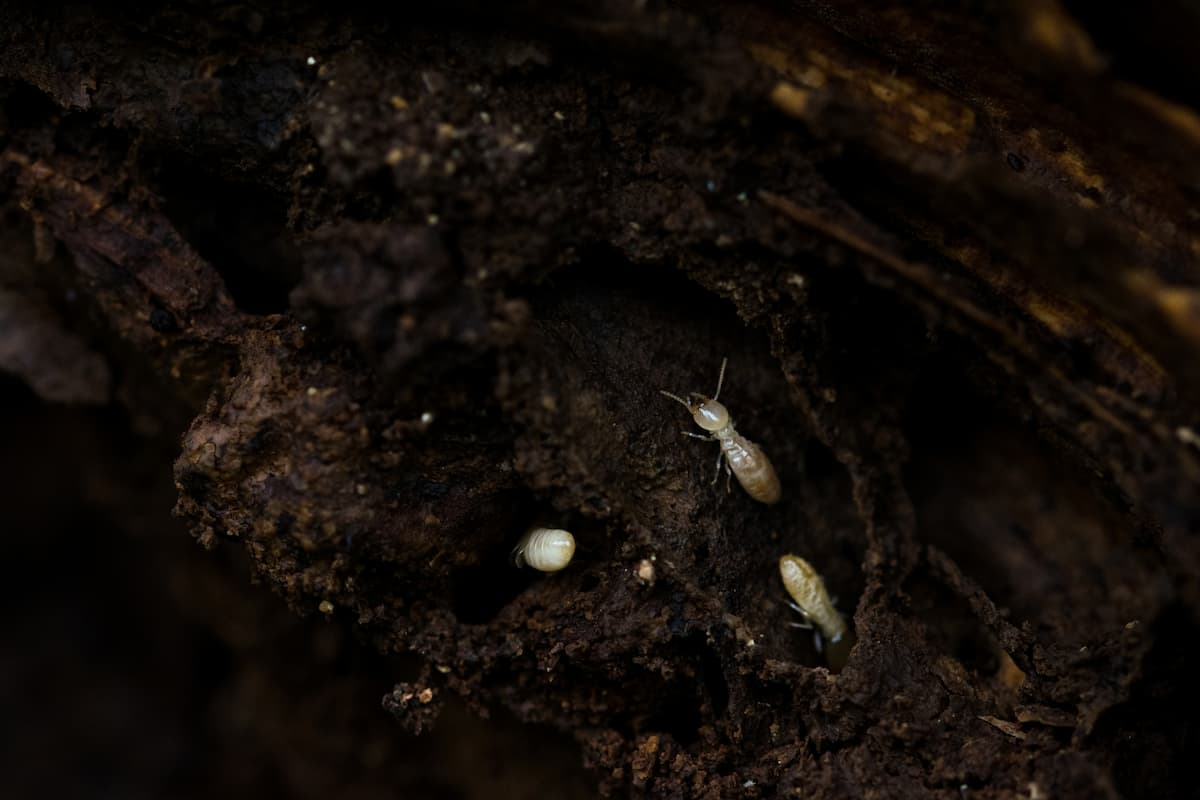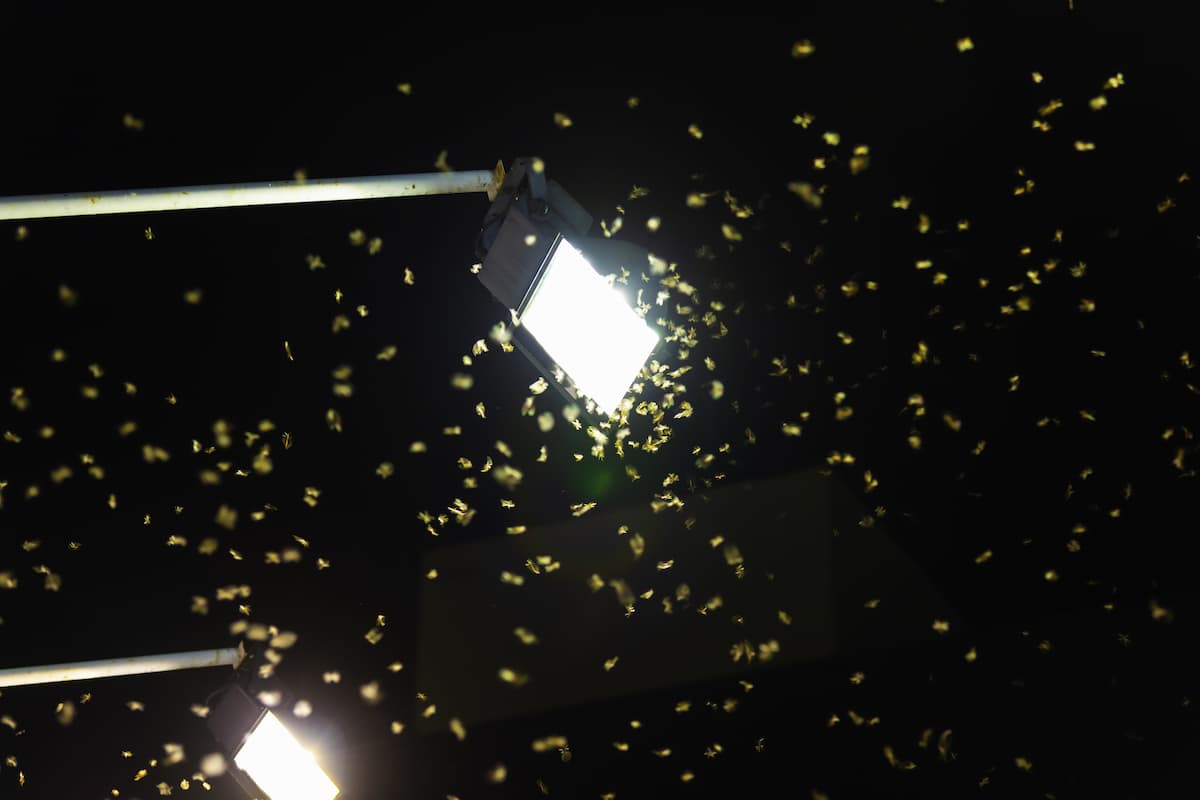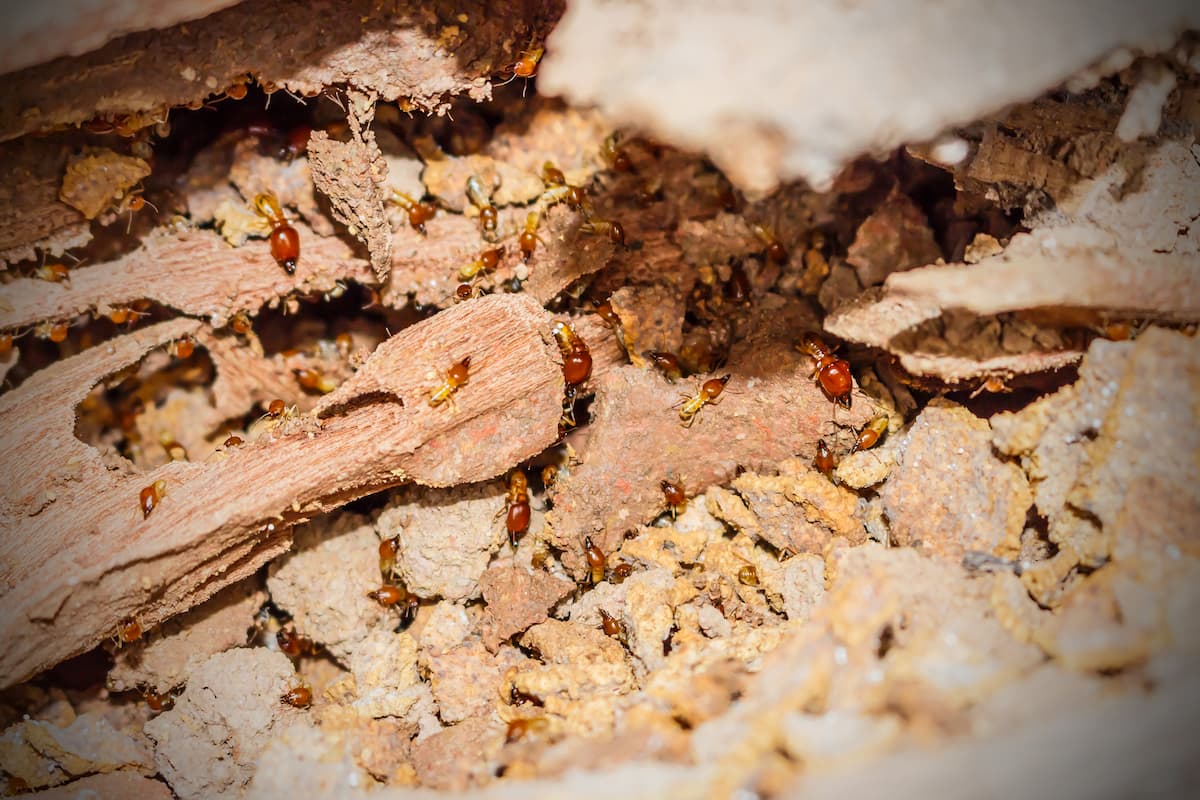Why Do Termites Come Out at Night?
If you have termites in your home, you may be more likely to see them at night. This is because termites may hide or be busy at work during the day.
It’s a good idea to pay attention to your home and the insect activity inside and outside day and night.
Termites usually come out at night because of the temperature change. Termites are more common in the summer when the temperature also affects the humidity level. Termites prefer damp and humid environments, so they are more likely to take advantage of these conditions at night.
Are Termites Only Nocturnal at Certain Times of Year?

It is common for termites to become more nocturnal during certain seasons.
During the spring and summer, you will encounter the most activity of the invasive Formosan termites and their drywood counterparts.
The number of swarms of termites increases as the ambient environmental temperature rises.
There is usually a wide range of winged termites around during the spring and summer when there is high humidity.
Termites emerge from their nests as soon as the temperatures rise.
What do Termites do at Night?
A lot of termites are more active at night than during the day. While people usually have less to do at night, insects, on the other hand, do not behave in this manner.
Insects are some of the hardest-working creatures on the planet, and darkness can’t dampen their spirits. A termite behaves the same way at night as during the day. However, due to their poor vision, they cannot see clearly during the night.
As a result, they rely more on their senses than their eyesight. Some of these insects lack eyes because they rarely use their sight to the extent they don’t even have eyes at birth.
Termites with reproductive characteristics, including kings and queens, have fragile eyes. Workers are, however, totally blind.
Pheromones, touch, and environmental cues enable them to move at night without being able to see.
This winged ant and flying termite thrive in a warm, humid environment at night. It has also been said that swarms are more likely to occur during the summer months after heavy rains.
The underground ant or subterranean termite that lives underground will fly to find a dry place after the rain.
The reproductive swarmers will seek a new location for their colonies once they have successfully paired off. Therefore, to avoid attracting them, turn off any light source outside your home if you see an ongoing swarm.
To keep them from swarming inside your home, close all windows tightly and block any other entry points around your home.
Are Termites Attracted to Lights at Night?

Subterranean termites prefer daylight, especially after rain, while dry wood termites are attracted to black light sources and swarm at night.
Winged termites swarm at night to avoid the dark because they are attracted to light sources. Therefore, your home’s lights, doors, and windows will likely be where you find termites at night.
Light sources should be elevated as high as possible from the ground if they’re worker termites without wings. To prevent light from being exposed outside, all windows with light should have their curtains closed.
Leaving lights on for prolonged periods isn’t a good idea if you have porch or backyard lights. Make sure you turn them off when you come inside after you are done being outside. Keep your indoor lighting on for a shorter time if you have larger fixtures.
If you have to, it would be best to leave only small lights on without facing any windows or doors. Keeping your lights off or minimal will prevent infestation of those areas of your home by doing this.
Are Termites Dangerous?
There are termites in almost every country, including the United States, Canada, Australia, New Zealand, South Africa, and parts of Europe and Asia. Termites are mostly harmless. However, they can help spread diseases that will cause harm to humans.
There is evidence that termites contribute to the spread of Lyme disease, transmitted to humans by the white-tailed deer tick, which can carry the disease from deer tick to human.
What are the Most Common Types of Termites?

There are many species of termites, but some are more common in or around homes than others. Some types are also more likely to cause damage to a home than others.
Knowing the type of termite, you are dealing with will allow you to determine the best way to get rid of them.
Subterranean Termites
Many species of termites live in the soil, but subterranean termites build the largest nests. The connections between the nests are made through trees and structural timbers in houses.
One of the most destructive species of termites in the United States, these termites can cause extensive damage.
Dampwood Termites
This group belongs to two families, Kalotermitidae and Hodotermitidae. Woods with high moisture content are the most common habitat for these species.
It is rare to find these termites in homes. Your house is less likely to be desirable for dampwood termites because homes have wood with no moisture content.
Most of their habitats are dampwoods, making soil contact undesirable for this type of termite.
Drywood Termites
Their habitat includes wood, hardwood floors, and timber. These termites are members of the Kalotermitidae family, unlike the subterranean termites. Because they prefer drywood areas, soil contact is unnecessary for them to thrive.
These species damage homes; however, unlike subterranean termites, drywood termites cause minor damage.
Subterranean termites do more damage, requiring different treatment methods than other termites like these drywood ones.
Conclusion
There are many species of termites; some are more active at night during certain times of the year, like summer.
Most insects feel safer at night, and many are also attracted to light. So if you notice termites in your home and only see them in the dark, they are likely hidden during the day.
You may need to call an exterminator to have them removed from your home before they cause severe damage.
